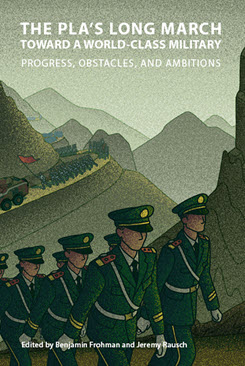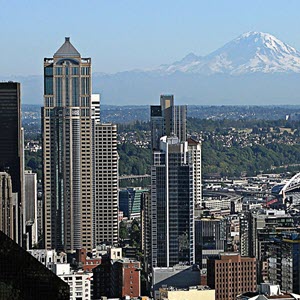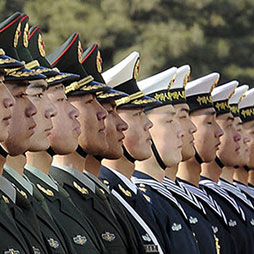Book from the People's Liberation Army Conference
Toward World-Class Air and Conventional Missile Forces: Requirements for and Progress by the PLA Air Force and Rocket Force
This chapter reviews stated requirements for the PLA Air Force’s and PLA Rocket Force’s conventional forces to become “world-class” and assesses their progress and ongoing challenges.
Executive Summary
MAIN ARGUMENT
Requirements for the PLA Air Force and conventional PLA Rocket Force to achieve world-class status are not well-defined. Concepts that provided the most detail about goals and standards include the strategic air force concept for the PLA Air Force and the three core standard requirements for the PLA Rocket Force. According to these criteria, the goal of world-class status is a work in progress for both services. For the PLA Air Force, a force-wide generational modernization of combat aircraft and the arrival of key enabler aircraft increasingly fulfill some desired capabilities of a strategic air force. Its impressive surface-to-air missiles and perhaps some beyond-visual-range air-to-air missiles can be considered leading capabilities. But struggles with hardware, along with personnel issues, training, “peace disease,” and corruption, continue to remain challenges. The PLA Rocket Force is closer to world-class status. It has no immediately comparable competition and has invested decades into amassing a quiver of long-range, accurate, and increasingly survivable missiles. However, the force likely still faces persistent challenges with corruption, joint and integrated operations, and personnel and leadership issues.
POLICY IMPLICATIONS
- Both services have transformed their hardware (weapons and equipment) in recent decades. But the thorny issues of maximizing human talent, minimizing corruption, and grappling with training and integration for joint warfare may be key considerations as PLA leaders and analysts assess progress toward attaining world-class status.
- Given the lack of clarity surrounding near-term requirements for either service to achieve world-class status, external watchers should closely monitor both services’ developments against the PLA’s 2035 modernization goals.
- In a conflict in the western Pacific involving China and the U.S. in the 2027 or 2035 time frame, the PLA Air Force and conventional PLA Rocket Force would play key roles leveraging their already world-class capabilities as well as other modernizing capabilities.
Cristina L. Garafola is a Senior Policy Researcher at RAND.
Elliot S. Ji is a Research Fellow in the Institute for National Strategic Studies at National Defense University. The views expressed in this chapter are his own and do not reflect the official policy or position of the National Defense University, the Department of War, or the U.S. government.



 The PLA's Long March toward World-Class Status
The PLA's Long March toward World-Class Status
